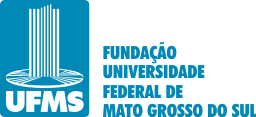Use este identificador para citar ou linkar para este item:
https://repositorio.ufms.br/handle/123456789/12835| Tipo: | Tese |
| Título: | PELOS CAMINHOS DA TOPONÍMIA DO NORDESTE PARAENSE: UMA ABORDAGEM LINGUÍSTICO-CULTURAL |
| Autor(es): | Livia Regina Fernandes Souza |
| Primeiro orientador: | Aparecida Negri Isquerdo |
| Resumo: | Esta tese tem como objeto de investigação a toponímia dos acidentes físicos rurais e dos acidentes humanos urbanos de 26 municípios que integram as regiões imediatas de Castanhal, Bragança e Paragominas, no estado do Pará. A pesquisa concebe o topônimo como um signo linguístico que reflete aspectos do ambiente físico, da cultura e da história das populações que habitam ou habitaram um determinado espaço geográfico. O estudo em questão busca responder às seguintes perguntas, cujas respostas forneceram subsídios para a elaboração desta tese: i) Que razões motivaram a nomeação dos acidentes físicos rurais (rios, lagos, igarapés etc.) e dos acidentes humanos urbanos (municípios, vilas e distritos) da região intermediária de CastanhalPA? ii) Em que proporção a língua portuguesa e as línguas indígenas se perpetuam na toponímia das regiões imediatas de Bragança, Castanhal e Paragominas? Como primeira hipótese de pesquisa, considera-se que a nomeação dos acidentes físicos rurais e dos acidentes humanos urbanos das regiões analisadas está relacionada à busca pela reafirmação da identidade local, refletindo tanto a relação histórica com o ambiente físico quanto os valores culturais das comunidades indígenas e coloniais, em um processo de representação e ressignificação territorial.A segunda hipótese parte da premissa de que a toponímia da área investigada reflete a interação entre a língua portuguesa e as línguas indígenas, com a presença de nomes híbridos que preservam elementos da cultura local. Esta tese fundamenta-se, sobretudo, nas contribuições de Dick (1990; 1992; 1999; 2004), Dauzat ([1926]1963), Leite de Vasconcellos (1931), Stewart (1954) e Trapero (1995). Para a análise linguística e taxonômica foram consultados dicionários de língua portuguesa (Houaiss, 2017; Aulete, 2011), dicionários de línguas indígenas (Barbosa, 1951; Cunha, 1998; Sampaio, 1987), dicionários etimológicos (Cunha, 2010; Nascentes, 1955) e sites institucionais de prefeituras. Esta tese analisou um corpus de 1.001 topônimos, 707 referentes a acidentes físicos e 294 a acidentes humanos, extraídos de mapas municipais (IBGE, 2020), com escalas que variam de 1:700 a 1:6,000, e de mapas municipais para fins estatísticos (IBGE, 2010), cujas escalas variam de 1:50,000 a 1:300,000. No geral, os resultados deste estudo apontam que 32,56% dos topônimos analisados possuem origem indígena, dando mostras da influência cultural dos povos originários na nomeação dos acidentes geográficos da região. Quanto à motivação toponímica, conforme a classificação proposta por Dick (1992), observa-se a predominância de topônimos de natureza física, que correspondem a 52,64% do total, enquanto os topônimos de natureza antropocultural representam 37,76% das denominações. No conjunto dos topônimos classificados como de natureza física, destacam-se os fitotopônimos, que correspondem a 40,41%, do total. Já entre aqueles de natureza antropocultural, sobressaem os antropotopônimos, com 26%. Em síntese, a pesquisa revelou características subjacentes ao processo de nomeação, recuperando aspectos físicos e ambientais das regiões analisadas, que não se limitam apenas à configuração do relevo ou à presença de cursos d’água, mas também incluem elementos como a fauna e a flora. Topônimos como rio Cauaxi, igarapé Marambaia, igarapé Tauari e rio Tracuateua refletem a herança indígena na região, tanto na língua de origem quanto no valor cultural que carregam. Por exemplo, “cauaxi” é uma palavra indígena que remete a um recurso natural utilizado pelos povos locais. Tradicionalmente, o cauaxi é uma esponja de água doce empregada na confecção de objetos artesanais. Assim, a nomeação dos topônimos revela a maneira como os habitantes interpretam e estabelecem vínculos com o meio ambiente, conservando, por meio da linguagem, elementos naturais e culturais que fortalecem a identidade coletiva e a memória histórica do território. Palavras-chave: Onomástica; Toponímia; Castanhal/PA; Cultura; Motivação. |
| Abstract: | This thesis investigates the toponymy of rural physical features and urban human settlements of 26 municipalities that comprise the immediate geographic regions of Castanhal, Bragança, and Paragominas, in the state of Pará, Brazil. The research conceptualizes toponyms as linguistic signs that reflect aspects of the physical environment, as well as the culture and history of the populations that inhabit or once inhabited a given geographical space. This study aims to address the following questions, whose answers provided the foundation for this research: i) What factors motivated the naming of rural physical features (rivers, lakes, streams, etc.) and urban human settlements (municipalities, towns, and districts) in the intermediate region of Castanhal/PA? ii) To what extent do the Portuguese language and Indigenous languages persist in the toponymy of the immediate regions of Bragança, Castanhal, and Paragominas?The first research hypothesis assumes that the naming of rural physical features and urban human settlements within the studied regions is linked to the reaffirmation of local identity, reflecting both the historical relationship with the physical environment and the cultural values of Indigenous and colonial communities, within a broader process of territorial representation and re-signification. The second hypothesis posits that the toponymy of the investigated area reflects the interaction between the Portuguese language and Indigenous languages, evidenced by the presence of hybrid names that preserve elements of local culture. This thesis is primarily grounded in the works of Dick (1990; 1992; 1999; 2004), Dauzat ([1926]1963), Leite de Vasconcellos (1931), Stewart (1954), and Trapero (1995). For the linguistic and taxonomic analysis, Portuguese dictionaries (Houaiss, 2017; Aulete, 2011), Indigenous language dictionaries (Barbosa, 1951; Cunha, 1998; Sampaio, 1987), etymological dictionaries (Cunha, 2010; Nascentes, 1955), and institutional websites of municipal governments were consulted. The corpus consists of 1,001 toponyms, of which 707 refer to physical features and 294 to human settlements, extracted from municipal maps (IBGE, 2020) with scales ranging from 1:700 to 1:6,000, and from statistical municipal maps (IBGE, 2010), with scales from 1:50,000 to 1:300,000. Overall, the results reveal that 32.56% of the toponyms analyzed are of Indigenous origin, highlighting the cultural influence of Indigenous peoples in naming geographic features in the region. Regarding toponymic motivation, following the classification proposed by Dick (1992), physical toponyms predominate, accounting for 52.64% of the total. Toponyms of anthropocultural nature represent 37.76% of the dataset. In the set of toponyms classified as physical in nature, phytotoponyms stand out, accounting for 40.41% of the total. Among those of anthropocultural nature, anthroponymic toponyms are the most prominent, with 26%. In summary, the study revealed underlying characteristics of the naming process, recovering physical and environmental aspects of the studied regions that go beyond landforms or watercourses, encompassing elements such as fauna and flora. Toponyms such as rio Cauaxi, igarapé Marambaia, igarapé Tauari, and rio Tracuateua reflect the Indigenous heritage of the region, both in linguistic origin and in cultural significance. For instance, cauaxi is an Indigenous term referring to a natural resource used by local peoples. Traditionally, cauaxi is a freshwater sponge employed in the crafting of artisanal objects. Thus, the naming of toponyms reveals how inhabitants interpret and establish connections with their environment, preserving through language the natural and cultural elements that reinforce collective identity and the historical memory of the territory. Keywords: Onomastics; Toponymy; Castanhal/PA; Culture; Motivation. |
| Palavras-chave: | Não informado |
| País: | Brasil |
| Editor: | Fundação Universidade Federal de Mato Grosso do Sul |
| Sigla da Instituição: | UFMS |
| Tipo de acesso: | Acesso Aberto |
| URI: | https://repositorio.ufms.br/handle/123456789/12835 |
| Data do documento: | 2025 |
| Aparece nas coleções: | Programa de Pós-graduação em Estudos de Linguagens |
Arquivos associados a este item:
| Arquivo | Tamanho | Formato | |
|---|---|---|---|
| TESE. LIVIA FERNANDES. UFMS. FINALIZADA.pdf | 3,8 MB | Adobe PDF | Visualizar/Abrir |
Os itens no repositório estão protegidos por copyright, com todos os direitos reservados, salvo quando é indicado o contrário.

